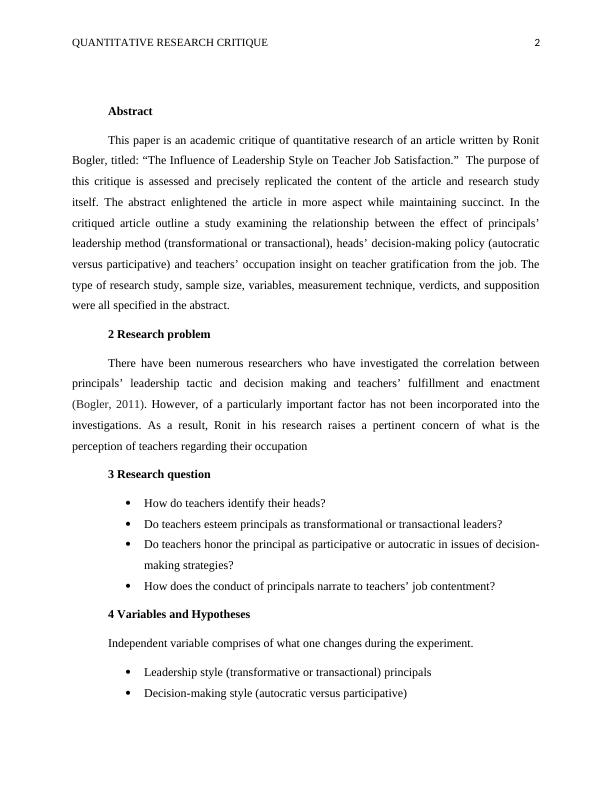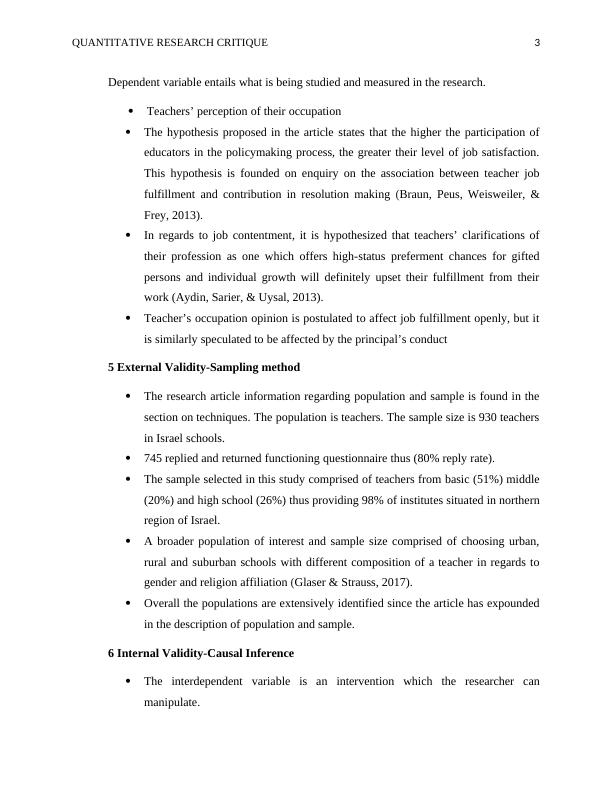Quantitative Research Critique
Evaluation of a quantitative research article in the field of educational administration.
7 Pages1304 Words452 Views
Added on 2023-06-04
About This Document
This paper critiques a quantitative research article on the influence of leadership style on teacher job satisfaction. The article examines the relationship between principals’ leadership method, decision-making policy, and teachers’ occupation insight on teacher gratification from the job. The research problem, research questions, variables and hypotheses, external validity-sampling method, internal validity-causal inference, internal validity-instruments, internal validity-analysis, and results are all discussed in detail.
Quantitative Research Critique
Evaluation of a quantitative research article in the field of educational administration.
Added on 2023-06-04
ShareRelated Documents
End of preview
Want to access all the pages? Upload your documents or become a member.



